What is an area light
An area light is a raised source of light designed to illuminate a specific geometric area. The principal objective of area lighting is to help vehicle drivers with the detection of obstacles within and beyond the range of the vehicle’s headlights, provide adequate visibility of pedestrians and cyclists, and/or ensure that specific outdoor tasks have adequate illumination. Area lights provide outdoor ambient lighting which radiates a comfortable level of brightness with light distribution customized to the function of the space and the complexity of the task being performed.
Good outdoor lighting facilitates visual perception of a space and the surrounding area, and contributes to the safety and efficiency in conducting all tasks within the designated areas. Equally important is to prevent the generation of spill light, light pollution and sky glow. Outdoor area lighting encompasses a vast range of applications, which include illumination of airports, parking lots, squares, campuses, parks, pedestrian streets, highway interchanges, sports grounds, work sites, ports, rail yards, etc.
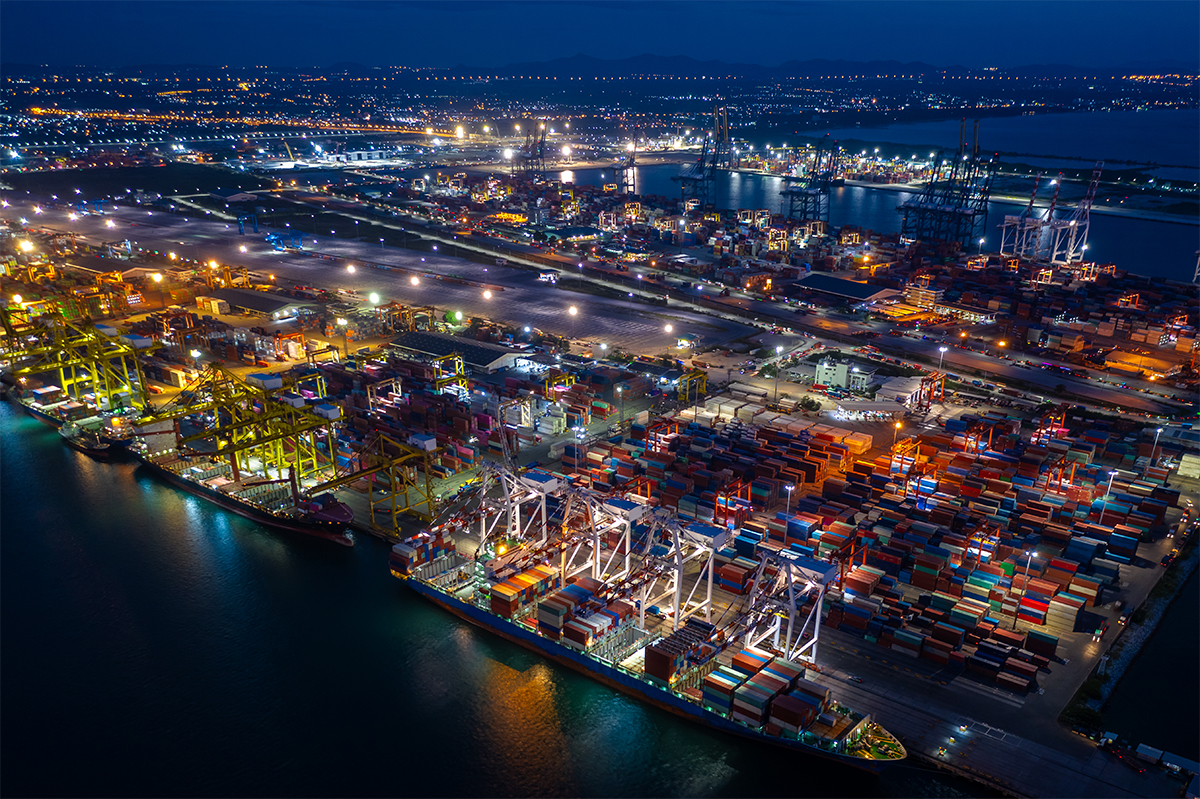
Design considerations
The issues surrounding area lighting are complex. There are various technical factors that may influence the lighting design and luminaire evaluation. A system approach that addresses interrelated design elements is required.
Area lighting design necessitates careful consideration of illuminance requirements. The density of luminous flux on a horizontal surface, which is known as horizontal illuminance, gives an indication of the distribution of the light actually reaching the ground. Increasing the amount of horizontal illuminance will increase pavement luminance, which is a measurable quantity of luminous intensity that results when luminous flux interacts with the pavement or ground. Higher pavement luminance provides a driver or pedestrian with visual information on pavement markings, boundaries and small objects on the illuminated area.
For area lighting applications, vertical illuminance is often as important as horizontal illuminance because it can improve object luminance for visibility of pedestrians and vertical obstacles, facilitate facial identification for security purpose, and help accomplish tasks that are located in a vertical plane. Minimum illuminances on a horizontal surface, a vertical surface, or both of them should be maintained when the task involves life safety, human-vehicular proximity and/or personal safety and security as significant concerns. To improve safety and performance, some area lighting applications require the variation in illuminance to be assessed and the uniformity to be characterized.
High uniformity lighting also reduces safety implications caused by adaptation effects. The human visual system can process information across three categories of vision: photopic, mesopic, and scotopic. The cone photoreceptors account for the majority of photopic vision, the rod photoreceptors account for the majority of scotopic vision, and mesopic vision is contributed to by both the rods and cones. The change in retinal illumination from light to dark involves the change from cone photoreceptor operation to rod photoreceptor operation, which can cause a transitional loss in visual acuity.
Obtrusive light control
While area lighting should deliver adequate illuminance, it should also provide tight control of obtrusive light. Glare control is an everlasting challenge. Glare is the sensation produced by luminance (within the field of view) that is excessively high in relation to the state of adaptation. The presence of excessive luminance may cause a reduction in visibility or cause feelings of discomfort. Light that strays from its intended purpose or emits in directions other than the main propagation direction of the beam can become a visual annoyance. Downward spill light beyond the boundary, which is known as light trespass, may enter neighboring buildings. Upward light (either direct or reflected) can cause sky glow (light pollution). The three types of interrelated obtrusive light must be contained within the design area by carefully selecting, locating, and mounting the luminaires.
Outdoor lighting zones
Measurement and calculation of spill light is based on vertical illuminance which is the key objectionable component. The IES classifies outdoor areas into one of five Lighting Zones (LZs) and defines maximum levels of spill light within given areas of ambient brightness.
- Lighting Zone 0 (LZ0) should be applied to areas where the natural environment could be seriously and adversely affected by small amounts of electric lighting at night. This is the recommended default zone for wilderness areas, parks and preserves, and undeveloped rural areas. The maximum initial vertical illuminance of area lighting in this zone is 0.5 lux.
- Lighting Zone 1 (LZ1) should be applied to areas that desire low ambient lighting levels and the maximum initial vertical illuminance of area lighting in this zone is 1 lux. This is the recommended default zone for rural and residential areas which include residential single or two family, agricultural zone districts, rural residential zine districts, business parks, etc.
- Lighting Zone 2 (LZ2) pertains to areas with moderate ambient levels. Electric lighting may be required for safety and convenience at night but should be delivered in a non-continuous manner (e.g., pools of light at crosswalks or intersections, rather than uniform lighting along a path or street. Areas fall into this classification include neighborhood business districts; churches, schools, and neighborhood recreational facilities; and light industrial zoning with modest nighttime uses or lighting requirements. The maximum initial vertical illuminance of area lighting in this zone is 3 lux.
- Lighting Zone 3 (LZ3) pertains to areas that require moderately high ambient light and have high expectations of continuous lighting. These areas include business zone districts, suburban commercial areas, town centers, industrial sites, rail and shipping yards, high use recreational and playing fields, regional shopping malls, car dealerships, gas stations, and other nighttime active exterior retail areas. The maximum initial vertical illuminance of area lighting in this zone is 8 lux.
- Lighting Zone 4 (LZ4) pertains to areas of very high ambient levels that allow a maximum initial vertical illuminance of 15 lux. LZ4 is applied to extremely unusual installations such as high density entertainment district and sites of heavy industrial uses.
Light distribution
The optical design of area lights plays a major role in obtrusive light control. Luminaires for outdoor area lighting (except floodlights) are classified based on lumen distribution within solid angle of specific interest. The IES Luminaire Classification System (LCS) addresses light distribution from outdoor area luminaires in general forward light (F), backlight (B), and uplight (U) zones, with each of these major zones being further divided into subzones. The lumens within each LCS solid angle provide data that can relate to an evaluation of obtrusive light.
Based on the lumens in each of the backlight, uplight and high-angle subzones, a luminaire is then given a BUG (Backlight, Uplight, and Glare) rating. The B, U, and G values range from 0 to 5, with 0 being the tightest control. Lighting designers can refer to the BUG rating of a luminaire to evaluate the appropriateness for a given project or lighting zone. The BUG rating applies to luminaires installed according to the photometric data.
The LCS metrics are intended to be used in conjunction with the IES distribution classifications which categorize area and roadway luminaires according to longitudinal (along-road) and transverse (across-road) light distributions. Longitudinal light distributions are divided into three groups: short (S), medium (M), and long (L).
The groups of transverse distribution classifications are divided according to the forward reach, in multiples of the luminaire’s mounting height, of the luminaire’s half-maximum candela distribution when extended to the ground. Transverse light distributions consist of groups from Type I through to VS.
- Type I distributions exhibit a narrow, symmetric illuminance pattern.
- Type II distributions exhibit a slightly wider, more asymmetric illuminance pattern than Type I.
- Type III distributions exhibit a wide, asymmetric illuminance pattern.
- Type IV distributions exhibit an asymmetric, forward throw illuminance pattern.
- Type V distributions exhibit a symmetrical circular illuminance pattern.
- Type VS distributions are symmetrical, nearly square illuminance patterns.
Legacy lighting technologies
Traditionally, the first choice of light source in area lighting had been high intensity discharge (HID) sources which include high pressure sodium (HPS), low pressure sodium (LPS), and metal halide (MH) lamps. Today, solid state lighting based on light emitting diode (LED) technology comes to the forefront of area lighting. LED technology delivers far-reaching potentials with regard to savings in energy and maintenance costs. The luminous efficacy of phosphor-converted LEDs, as measured in lumens per watt (lm/W), continues to advance toward the practical limit of 255 lm/W.
The advantage of LED lighting over HID lighting in terms of operational efficiency is amplified by its ability to enable energy savings beyond improved source efficiency to embrace a high lighting application efficiency (LAE). LAE characterizes the efficient delivery of light from the light source to the lighted task, the ability to actively control the light output to deliver the right amount of light on demand, and the effectiveness of the light spectrum for the lighting application.
Compared with HID fixtures that have large optical losses, poor dimming and spectral controllability, LED area lights offer significantly improved optical delivery efficiency, use light sources with the spectral power distribution (SPD) optimized for a high spectral efficiency, and allow for integration with dimming and sensor technologies for high intensity effectiveness. The reduced maintenance costs contribute to a significant part of return on investment (ROI) generated from LED lighting systems with extended lifespans. LED lighting also provides the opportunity to improve the visual performance of lighting, such as color quality and optical distribution, which is unattainable with traditional lighting technologies.
LED technology opens up new horizons for area lighting
The LED luminaire is the final custom element that tailors how LEDs fit into an application. LED area lights, due to the diversity of outdoor environments with which the luminaires must be compatible and integrate, come in a wide proliferation of luminaire types, performance variants, light distributions, mounting heights, and fixtures forms. Outdoor area lights have no fixed forms. Any outdoor luminaire that has an applicable light distribution, lumen package, mounting design, and outdoor-rated construction can be used to provide area lighting. Therefore, an LED area light can be a roadway luminaire, a high mast light, a floodlight, a wall mounted light, a post top light, or an architectural luminaire.
- Roadway luminaires are mounted on poles with davit-style, truss-style or mast-arm-style cantilevered arms. Luminaire mounting heights are typically 7.5 m to 15 m. The optical system is often configured to be perpendicular with respect to nadir.
- Post top lights provide human scale illumination and often carry an aesthetic style to blend in with the surroundings. These fixtures have pole heights of 3 m to 9 m.
- Architectural luminaires share many similarities with post top lights but offer more flexibility to cope with challenges of architectural integration with the surrounding environment.
- Wall mounted area lights are used to illuminate relatively narrow areas that are between or adjacent to buildings. These luminaires are often similar to those used for davit-style, truss-style or mast-arm lighting.
High mast lights, with mounting heights ranging from 18 m to 55 m, are very effective at illuminating highway interchanges or large areas such as toll plazas and parking lots. A high mast light has multiple downlight luminaires configured to produce symmetrical (circular or square) distributions or bisymmetrical distributions. High mast poles are also used to mount floodlights which can be aimed to project a controlled beam of light onto an outdoor area. Floodlighting systems are available in symmetric and asymmetric distributions. These systems should be used as caution as they typically emit more obtrusive light than high mast downlights.
Spectral considerations
While HID area lights utilize a common set of lamps across manufacturers with similar performance and lifetimes, LED area lights are complex systems capable of reaching higher performances and lasting longer than all the conventional light fixtures only when the LEDs and the thermal, electrical, optical and mechanical systems work in unison to deliver the intended value.
The LED package selection defines the luminaire’s color characteristics which are quantified by correlated color temperature (CCT) and color rendering index (CRI). The color rendering performance is usually not a priority in outdoor lighting applications. A typical 70 CRI of LED area lights can meet the vast majority of lighting requirements. The decision on the CCT is a bit complicated. The value of Kelvin generally corresponds to the proportion of blue wavelengths in the visible spectrum.
A higher CCT (e.g. 5000K) indicates a relatively high proportion of blue wavelengths, which contributes to a high scotopic/photopic (S/P) ratio. For area lighting, average light levels are usually in the mesopic range. Under mesopic viewing conditions and for predominantly peripheral visual tasks, light sources with high S/P ratios have a higher effectiveness than those with low S/P ratios. Higher CCT light sources also produce more photopic lumens and thus higher luminous efficacies because of the smaller Stokes loss and the high sensitivity of the human eye to a spectral power distribution (SPD) with a high proportion of blue wavelengths.
Obviously, a higher CCT translates to higher visibility in typical nighttime viewing conditions and a lower source cost due to the higher efficacy. However, there’s a trade-off. The large proportion of blue wavelengths can result in more negative impact on animal communities and increased nighttime sky brightness.
System integration
The package into which the LED chip is assembled to provide mechanical stability, thermal conduction, electrical connection, and environmental protection has a significant impact on the LED’s light extraction efficiency, its ability to resist electrical and thermal stresses, and the luminaire’s thermal, electrical and optical design. LEDs can be divided by their package platforms into mid-power packages, high-power packages, chip-on-board (COB) packages, and chip scale packages (CSPs).
Notwithstanding the careful selection of the LEDs, the ultimate performance and reliability of LEDs are determined by how they are integrated into the luminaires. A holistic approach is necessary to ensure that the operational and environmental stresses on the LEDs are tightly controlled.
Thermal management is essential to achieving the full potential of an LED throughout its entire functional life. The thermal resistances of all the constitutive elements that make up the thermal path must be minimized to ensure the waste heat generated at the LED junction is effectively transferred to the ambient.
The LED driver that converts alternating current (AC) line power to a voltage and current compatible with the LED packages should be designed to allow the efficiency to remain high while protecting downstream components from power surges and other electrical events. The driver may incorporate control functions such as dimmability and be integrated into intelligent lighting systems through analog and digital interfaces such as 0-10V, digitally addressable light interface (DALI) and ZigBee.
Effective optical design exploiting the directional nature of LEDs can translate to higher optical efficiency, more uniform light distribution, improved coverage, and cutoff of backlight, uplight and high angle light. LED area lights should also be sealed against ingress of dust and moisture and protected against atmospheric corrosion and UV degradation to maximize their effective life in outdoor environments.


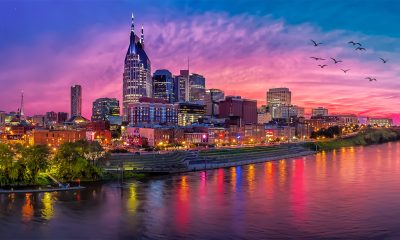
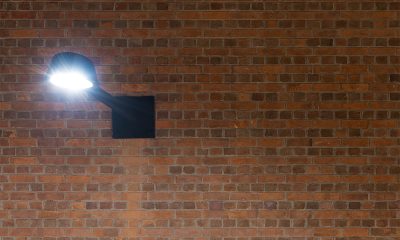
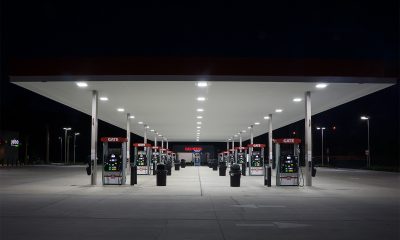
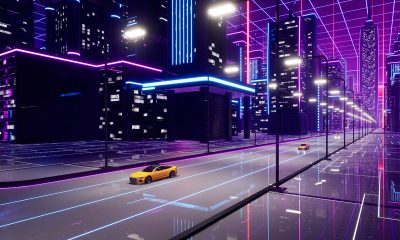
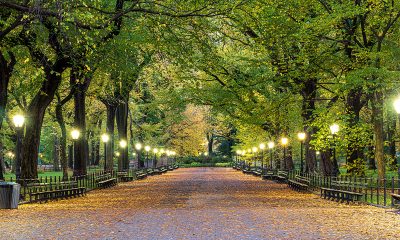

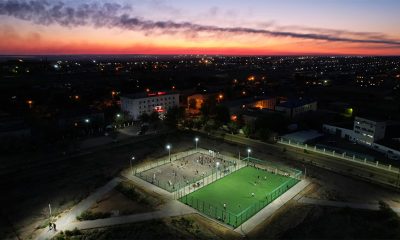
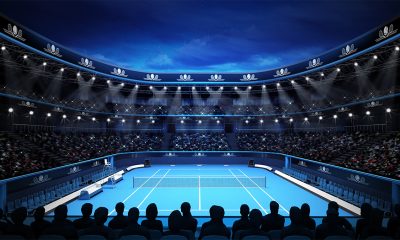

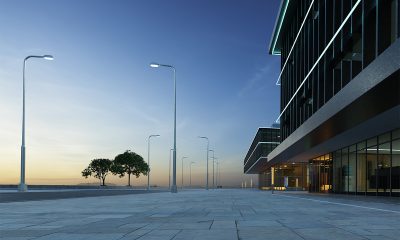
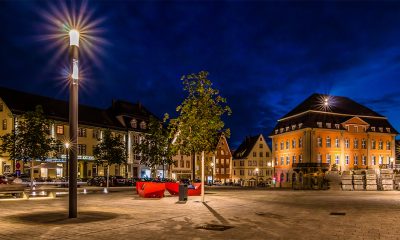
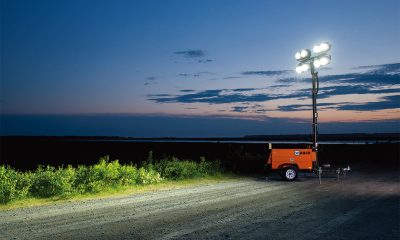





Loading...